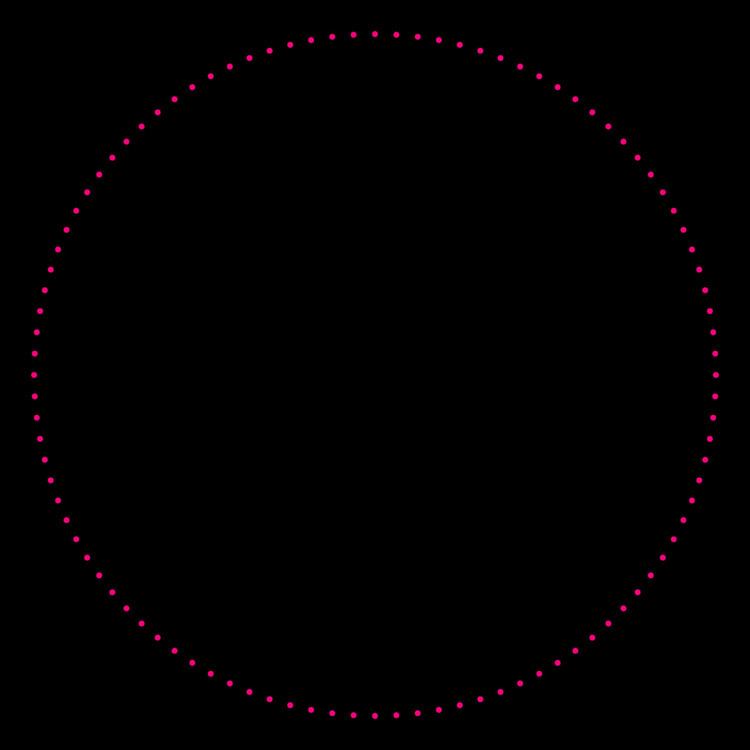Type Regular polygon Schläfli symbol {100}, t{50}, tt{25} Dual polygon Self | Edges and vertices 100 Internal angle (degrees) 176.4° | |
 | ||
Symmetry group Dihedral (D100), order 2×100 | ||
In geometry, a hectogon or hecatontagon or 100-gon is a hundred-sided polygon. The sum of any hectogon's interior angles is 17640 degrees.
Contents
Regular hectogon
A regular hectogon is represented by Schläfli symbol {100} and can be constructed as a truncated pentacontagon, t{50}, or a twice-truncated icosipentagon, tt{25}.
One interior angle in a regular hectogon is 176 2⁄5°, meaning that one exterior angle would be 3 3⁄5°.
The area of a regular hectogon is (with t = edge length)
and its inradius is
The circumradius of a regular hectogon is
Because 100 = 22 × 52, the number of sides is neither a product of distinct Fermat primes nor a power of two. Thus the regular hectogon is not a constructible polygon. Indeed, it is not even constructible with the use of neusis or an angle trisector, as the number of sides is neither a product of distinct Pierpont primes, nor a product of powers of two and three.
Symmetry
The regular hectogon has Dih100 dihedral symmetry, order 200, represented by 100 lines of reflection. Dih100 has 8 dihedral subgroups: (Dih50, Dih25), (Dih20, Dih10, Dih5), (Dih4, Dih2, and Dih1). It also has 9 more cyclic symmetries as subgroups: (Z100, Z50, Z25), (Z20, Z10, Z5), and (Z4, Z2, Z1), with Zn representing π/n radian rotational symmetry.
John Conway labels these lower symmetries with a letter and order of the symmetry follows the letter. r200 represents full symmetry and a1 labels no symmetry. He gives d (diagonal) with mirror lines through vertices, p with mirror lines through edges (perpendicular), i with mirror lines through both vertices and edges, and g for rotational symmetry.
These lower symmetries allows degrees of freedom in defining irregular hectogons. Only the g100 subgroup has no degrees of freedom but can seen as directed edges.
Hectogram
A hectogram is an 100-sided star polygon. There are 19 regular forms given by Schläfli symbols {100/3}, {100/7}, {100/9}, {100/11}, {100/13}, {100/17}, {100/19}, {100/21}, {100/23}, {100/27}, {100/29}, {100/31}, {100/33}, {100/37}, {100/39}, {100/41}, {100/43}, {100/47}, and {100/49}, as well as 30 regular star figures with the same vertex configuration.
